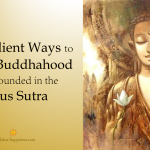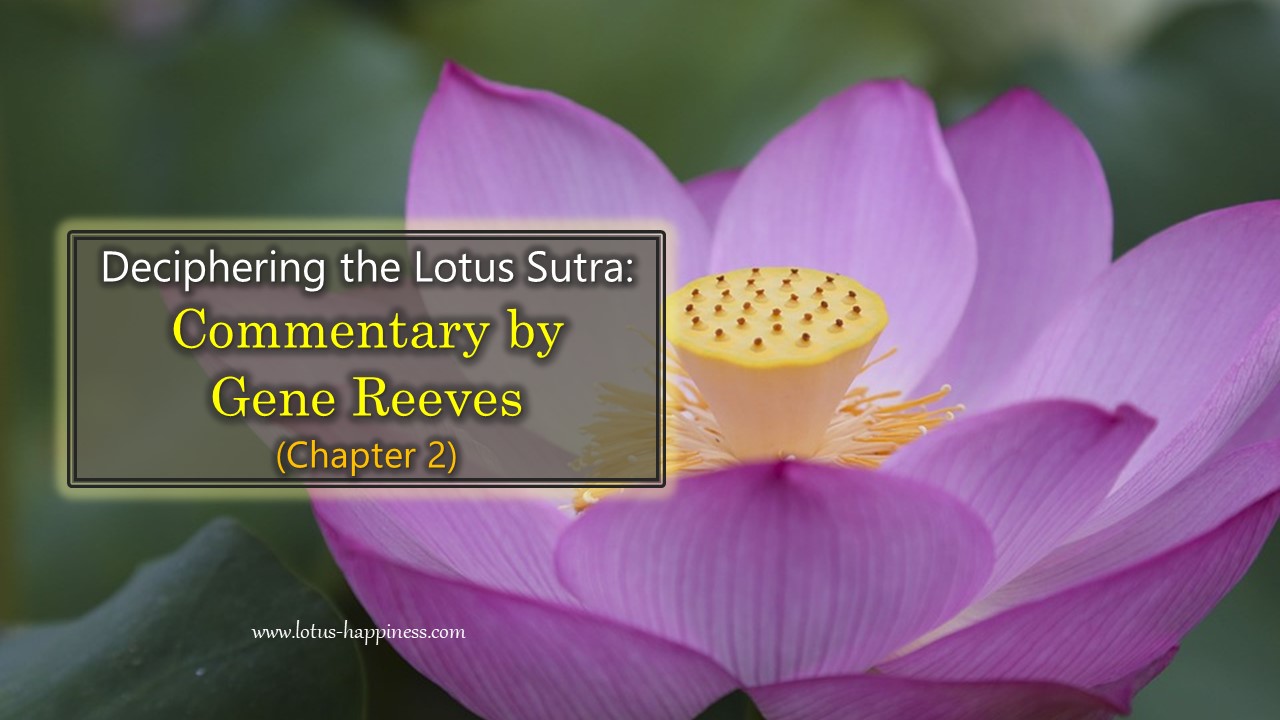Understanding Tibetan Buddhism (Part 5)
Preliminary practices
The preliminary practices are the approach in the preparation for the Tantric practice. In Tibet, it is known as Ngondro, which means ‘something that goes before’. There are two kinds of preliminary practices, the first is the common / ordinary and the second is special / particular.
Common or Ordinary Preliminaries — Four Thoughts
It involves ‘four thoughts’ that can turn one’s mind towards the practice of Dharma providing a solid foundation for the Tantric practice.
- Appreciation of the precious human existence — In Tibetan, it is called Dal-jor, which means a freedom or opportunity difficult to come by. One has to take the precious opportunity of being a human being on Earth in this period of eon, so that one has the freedom to allow for the spiritual development. There are many kinds of life existence, known as Eight Hindered Existences. In some, one has no chance to learn and practise Buddhism.
- Awareness of impermanence of all phenomena — Referring to the Three Dharma Seals or Three Universal Truths, one should have a thorough understanding of the Truth of Impermanence, the Truth of No-self, and the Truth of Nirvana. As Milarepa said, ” It was the fear of death that drove me to the mountains, and I meditated for so long on death and impermanence that I realized the deathless state of mind. Now, death holds no fears for me.”
- Understanding the concept of Karma — It is the causality between actions and experience. It is the most significant belief in Buddhism, which explains all causes and effects in the past, present and future. With the understanding of Karma, we can take virtuous actions, which can produce positive results in happiness and fulfillment, and can prevent harmful or evil actions, which would otherwise bring us suffering and pain.
- Awareness of the sufferings and limitations of Samsara (i.e. reincarnation) — We human beings suffer from birth, aging, sickness and death. We have severe afflictions, emotion and delusion, etc. due to our ignorance. The only solution of relieving us from suffering is attaining enlightenment. The practice of Prajna (or Wisdom) is the only way that can break off our ignorance.
Special or Particular Preliminaries — Four Mula Yogas
They are known as Four Foundation Yogas, or Mula Yogas, which form the basis of Tibetan spiritual practices. Mula is a Sanskrit word meaning root and foundation, while Yoga simply means ‘that unites’. It is considered as the entrance to the Vajrayana, and is common in all Tibetan Buddhist school in general.
- First Foundation Yoga — Refuge and Prostration
In Tibetan Buddhism, apart from taking refuge in the Three Jewels (i.e. Buddha, Dharma and Sangha), the practitioner has to take refuge in the Three Roots as well. The three roots are, namely, the Guru as the root of blessing, the Yidam or meditation deity as the root of accomplishment, and the Dakini or Dharma protector as the root of enlightenment activity.
It consists of three main elements, namely, prostration, recitation and visualization, corresponding to body, speech and mind respectively. These three modes of functioning correspond to the Threefold Body, namely. Nirmanakaya, Sambhogakaya and Dharmakaya respectively. The mental element of the first Mula Yoga is the visualization of the so-called Refuge Tree, which is made up of various images, such as lotus flower, Tantric deities, Bodhisattvas and Buddhas. The verbal element of this Mula Yoga consists of reciting aloud a series of verses expressing one’s determination of taking refuge. One takes refuge in the founder of the tradition – Padmasambhava for the Nyingma school – as the embodiment of all the Refuges. Finally, the physical element of this Mula Yoga is prostration. Tibetan Buddhist devotees prostrate fully and rather dramatically, flat on their faces with their arms stretching out in the front. They can prostrate in full-length manner for a distance of several hundred miles. One may think that it is crazy to do so. However, according to tradition, one vows to up 100,000 prostrations. This Foundation Yoga represents the Hinayana component of Buddhism, which is regarded as the Basic Buddhism, concluding in taking refuge in the Buddha, Dharma and Sangha.
- Second Foundation Yoga – Development of the Bodhicitta
The second Mula Yoga is the arising of Bodhicitta, the desire towards Enlightenment for the benefit of all living beings, The practitioner has to recite it for 100,000 times. (It is a common characteristic of the Vajrayana that one does a practice for 100,000 times, because the repetition can help penetrate into one’s unconscious mind.) Thus, one has to develop kindness and compassion for all beings, as well as to cultivating sympathetic joy and equanimity. Although such practices are common in both Hinayana and Mahayana, people usually consider Mula Yoga as representing the Mahayana component of Buddhism.
- Third Foundation Yoga — Meditation and Mantra Recitation of Vajravatta
The purpose of this Foundation Yoga is to purify oneself of different kinds of obscurations, confusion and negativity. Four forces or powers are required:
- The supportive force from the individual commitment of the Hinayana, the Bodhisattva vows of the Mahayana, or the Tantric Samaya or commitment of the Vajrayana
- The force from meditating Vajravatta, reciting the Mantra, as a process of visualized purification
- The force from repentance or remorse
- The force from the strong will or commitment to purify ourselves of hindering and harmful effects.
The Vajravatta meditation is the single excellent and effective practice for purification that is found in the Sutra or the Tantra teachings. It involves a series of complex visualization of objects, seed syllables of the Mantra, etc. (which is not to be elaborated here) The effectiveness of the purification can be assessed from the external signs/indications, such as the sun or moon rising in the sky, finding ourselves in a beautiful meadow or at the peak of high mountain, etc.
- Fourth Foundation Yoga – The Offering of the Mandala
The Mandala practice enhances the positive factors in attaining enlightenment. According to traditions, two small metal plates, called the Mandalas, are used as a basis for meditation. One of them is placed on the shrine, with five piles of rice in a pattern, one in the center and one in each of the four directions. This forms the basis for the visualization of the sources of refuge, the Three Jewels and the Three Roots, in the sky in front of the practitioner. The other Mandala is held in the hand for making offerings.
The actual visualization is built in stages. The first step is to create an idealized conception of the universe in four directions, then the seven attributes of the universe monarch (wheel, gem, consort, minister, elephant, horse and general), and then the eighth attribute is a great vase filled with treasures, which represent the eight cardinal and inter-cardinal directions, including East, South, West, North, SE, SW, NE, NW.
Next, the eight offering goddess are visualized in the cardinal directions, namely, the goddess of joy, the goddess of flower garlands, goddess of song, and the goddess of dance, then the other four in the inter-cardinal directions, i.e. goddess of flowers in SE, goddess of incense in SW, goddess of lamps, light and illumination in NW, and goddess of perfumed water in NE. The next elements are the sun and the moon, the world systems of greater and greater order of magnitude. One meditates and allows the mind rest in a state of formlessness, non-conceptual awareness and tranguility.
In making offering, one should not simply benefit oneself, but benefit all beings out of compassion.












